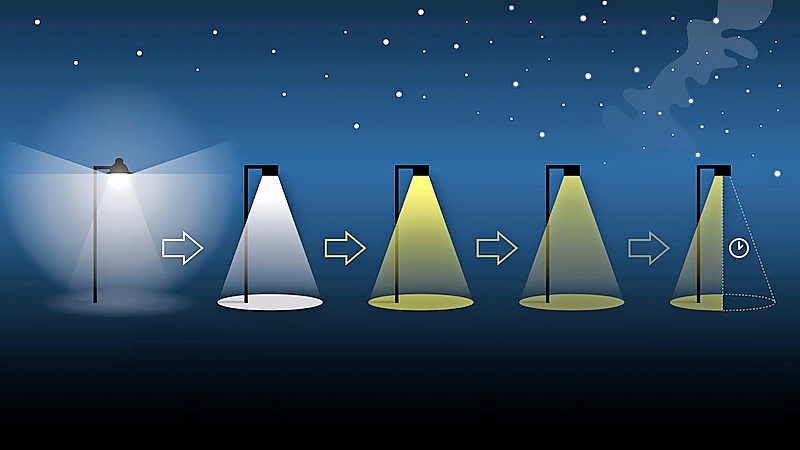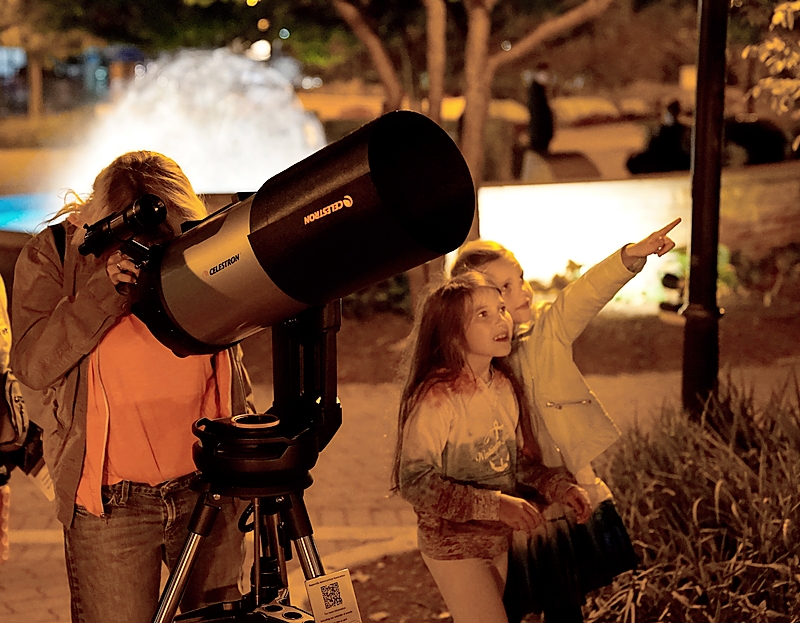Good Night
By Kelli Anderson
Appears in the November 2022 issue.
Flipping the switch on light pollution


Fifty years ago in the Fox Valley, 2,000 stars glittered across the night sky. Today, only about 40 remain visible to the naked eye. “I have spent decades under the stars,” says Drew Carhart, founding member of the Naperville Astronomical Association. “And I have been gradually watching the night sky disappear.”
The star-stealing culprit? Light pollution. The innovation of powerful LED light technology has been both a blessing and a curse. When used excessively, artificial light disrupts wildlife, harms human health, costs billions in wasted energy, and obscures our view of the universe. To combat light pollution, cities like Chicago—once one of the most light-polluted city in the world—and its nearby communities are beginning to implement changes with the help of the International Dark-Sky Association (IDA), a leading authority on solving this modern global problem.
North American birds, for example, have been seriously affected by light pollution; the avian population has plummeted by 3 billion since 1970. According to Cornell Lab of Ornithology, an estimated 600 million migrating birds die each year in the United States as a direct result of window strikes and disorientation caused by excessive urban light, especially during spring and fall. A Chicago Field Museum study found that merely switching off the lights at night at one downtown high-rise reduced migratory bird deaths by 80 percent.
So, what generates light pollution?
“The primary cause is sky glow,” says Adam Kreuzer of Wheaton and a delegate with the Chicago chapter of the IDA. “It’s the unshielded light at night that goes up and expands across the atmosphere creating the kind of glow we see over cities like Chicago.”
Two other contributors are glare and trespass. “Glare is the light that enters our eyes at shallow angles and blinds us, such as overly bright, blue-spectrum LED headlights,” says Barb McKittrick, environmental education manager at the Forest Preserve District of Kane County. “Light trespass is like when a neighbor’s flood lights shine into your bedroom window.”
Fortunately, it doesn’t take much to make major improvements, as Homer Glen (Illinois’s first IDA-designated Dark-Sky Community) or the Forest Preserve of DuPage County (which recently passed a resolution to reduce light pollution) have learned. Individuals, too, can have a positive impact with simple, effective practices like these:
- Place lights only where needed.
- Install light shields to direct all outdoor light downward to reduce sky glow.
- Choose warm, yellow-spectrum lights with a lower intensity (2,700 kelvin, 800 lumens, or lower).
- Install motion-sensor systems so light is only on as needed, not constant.
- Turn lights off after midnight.
- Support initiatives for outdoor lighting ordinances in your community.
“This is solvable—we can live modern, active lives at night without handicap, and do lighting so it doesn’t destroy nature at the same time,” Carhart says. “We can do this right.”
For more: darksky.org.
Graphic Courtesy of the International Dark-Sky Association. photo courtesy of Drew Carhart/Naperville Astronomical Association


